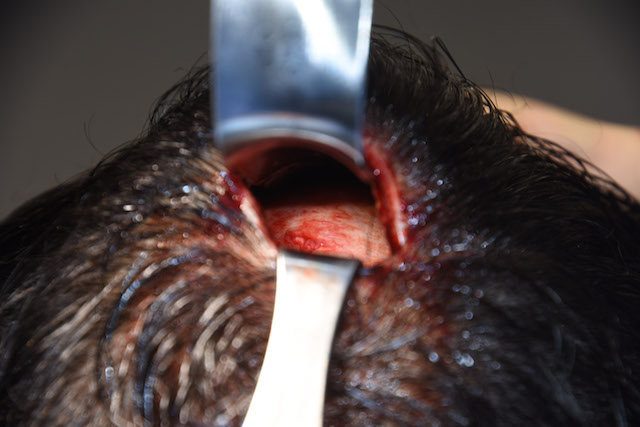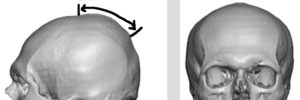Skull reshaping surgery uses a variety of augmentative and reductive techniques to treat a large number of aesthetic deformities. One such skull shape problem that is commonly treated is the sagittal crest or ridge deformity. This is a thickened midline of bone that runs between the original anterior and posterior fontanelles. It can extend completely between or only cover a part of the sagittal suture’s midline distance. Most commonly the ridge is located at the posterior half of the sagittal suture line and extends anteriorly from the crown area.
The sagittal ridge skull deformity is treated by a burring reduction technique. Because it is usually thickened bone it can be safely reduced enough to lessen or eliminate its prominence. One of the keys to the procedure is that the incision needed for access to do the procedure must be limited in size for aesthetic reasons. Since most of the patients who undergo the procedure are men and may have limited hair coverage, there is an important need for a discrete incision and eventually imperceptible scar.
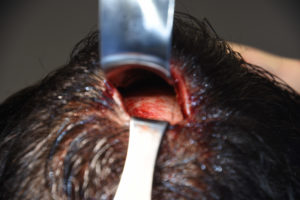
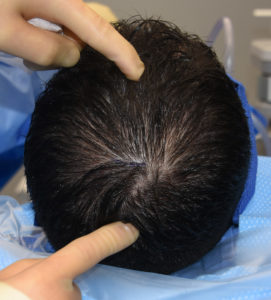
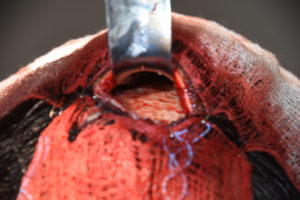
Dr. Barry Eppley
Indianapolis, Indiana

